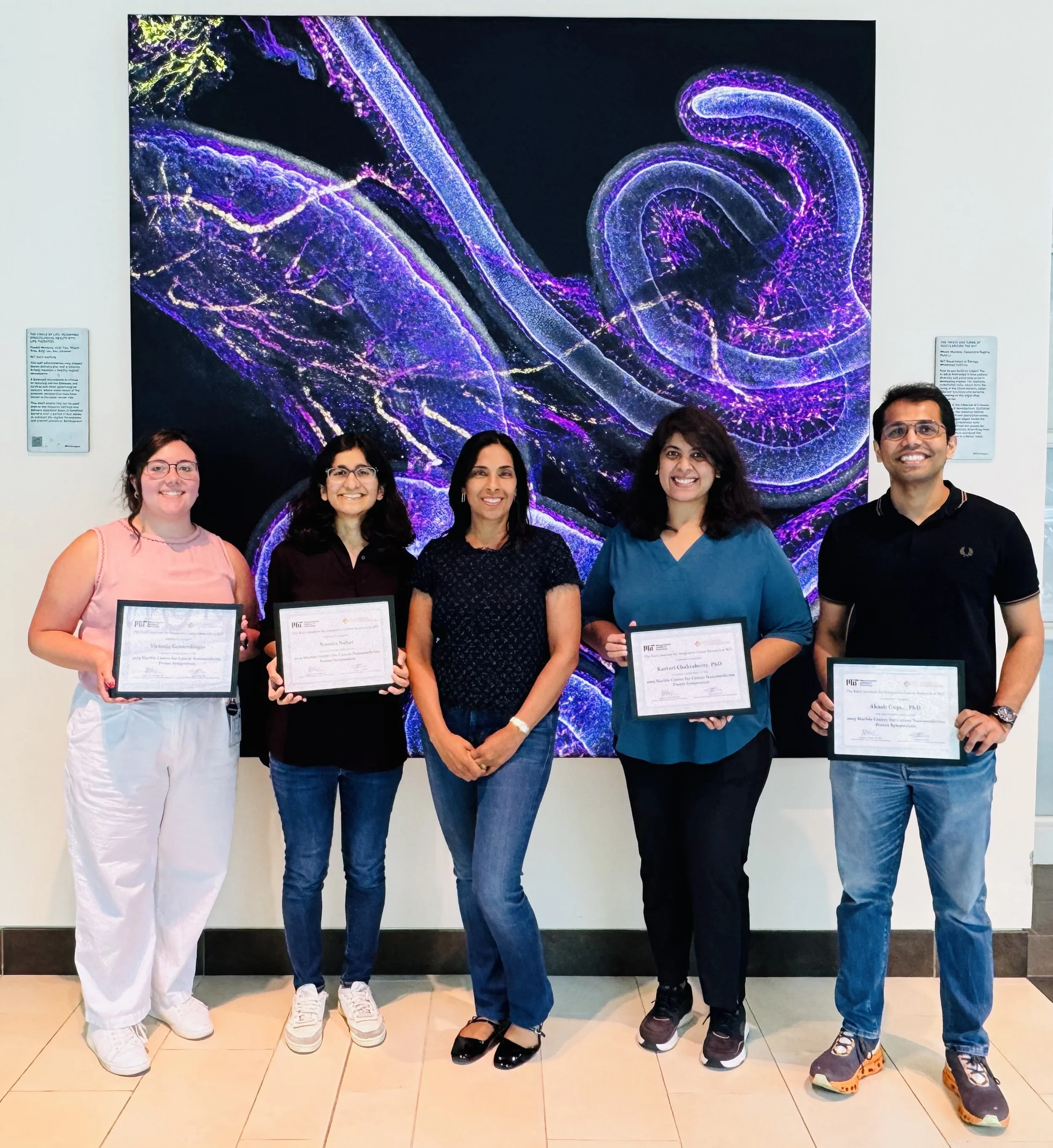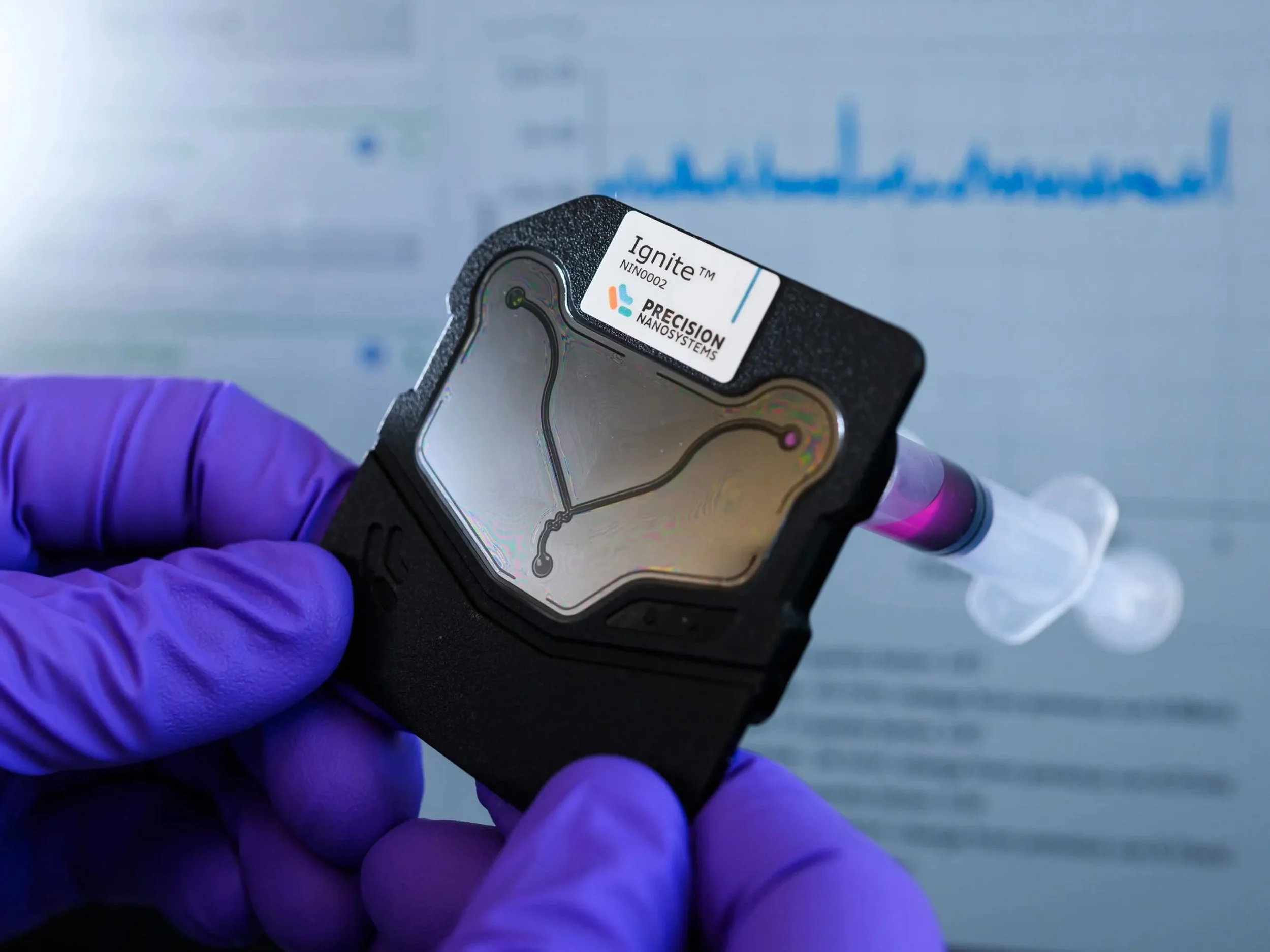July Bulletin
Issue 106
Community Notices
Save the date: Marble Center Distinguished Seminar with Dr. David Edwards, September 15, 2025 (4-5pm)
David A. Edwards, Ph.D., is a biophysicist, founder, and CEO of Sensory Cloud Inc., a Boston-based startup company aimed at deactivation of mechano-sensitive channels for the treatment of respiratory disease. Prior to joining the company, David was on the faculty of Engineering & Applied Sciences at Harvard University (2002-2019), after having co-founded and sold his first startup company, Advanced Inhalation Research (AIR) to Alkermes. The AIR technology, based on David’s 1997 Science publication describing the design of large porous particles for the non-invasive delivery of injectable drugs, led to the FDA approved Inbrija, inhaled L-Dopa for the treatment of Parkinson’s. While at Harvard, David also pursued large porous particle technology for the development of the first inhaled dry powder BCG for mucosal vaccination against tuberculosis (PNAS 2007, 2008).
Since David’s 2004 PNAS publication describing the impact on respiratory droplet generation of the hydrating of human lungs by endogenous monovalent cations, David’s research has increasingly focused on the respiratory health benefits of the inhalation of monovalent and divalent salt cations, leading to the startup of Sensory Cloud Inc. In recent years, with a series of publications (PNAS 2021, Nature SciReports 2022, Quarterly Reviews Biophysics Discovery 2023, JAMP 2023, LUNG 2024, ERJOR 2024, Nature Communications Earth & Environment 2025), David’s research with a growing number of international collaborators has led to the discovery that, together with other planetary ecosystems, human airways are dehydrating with global warming.
David has founded other companies, including Foodberry, pioneering new food forms based on the natural model of the grape. David is currently Adjunct professor of medicine at Johns Hopkins University, and remains as an Associate in the John A Paulson School of Engineering & Applied Sciences at Harvard University. He is a member of the US National Academy of Engineering, the French National Academy of Engineering (Académie des technologies), and the US National Academy of Inventors. For his work in the creative arts and nonfiction/fiction writing in French & English, David was made a Chevalier of arts and letters by the French Ministry of Culture in 2008.
Left to right: Victoria Gomerdinger (Hammond Lab), Namita Nabar (Hammond Lab), Sangeeta Bhatia, MD, PhD, Kasturi Chakraborty, PhD (Bhatia Lab), Akash Gupta, PhD (Anderson Lab)
Congratulations to winners of the 2025 Marble Center Poster Symposium!
The winners of this year’s poster symposium are:
Kasturi Chakraborty, PhD from the Bhatia Lab for her poster on “Enhancing Circulating Tumor DNA Recovery and Liquid Biopsy Sensitivity with Precision Liposomal Priming Agents.”
Victoria Gomerdinger from the Hammond Lab for her poster on “Antigen Presenting Cell-Targeted Immunomodulatory Nanoparticle Therapy for Ovarian Cancer.”
Akash Gupta, PhD from the Anderson Lab for his poster on “Navigating the Chemical Landscape of Ionizable Lipids to Develop Ultrapotent mRNA Vaccines.”
Namita Nabar from the Hammond Lab for her poster on “Layered lipid nanoparticles for targeted CRISPR-Cas9 delivery to ovarian cancer.”
News
Cancer-targeting nanoparticles are moving closer to human trial
Microfluidic devices can be used to assemble the drug delivery nanoparticles rapidly and in large quantities (Courtesy: Gretchen Ertl)
(MIT Technology Review) Over the past decade, Institute Professor Paula Hammond ’84, PhD ’93, and her students have used a technique known as layer-by-layer assembly to create a variety of polymer-coated nanoparticles that can be loaded with cancer-fighting drugs. The particles, which could prevent many side effects of chemotherapy by targeting tumors directly, have proved effective in mouse studies. Now the researchers have come up with a technique that allows them to manufacture many more particles in much less time, moving them closer to human use. “There’s a lot of promise with the nanoparticle systems we’ve been developing, and we’ve been really excited more recently with the successes that we’ve been seeing in animal models for our treatments for ovarian cancer in particular,” says Hammond, the senior author of a paper on the new technique along with Darrell Irvine, a professor at the Scripps Research Institute.
In the original production technique, layers with different properties can be laid down by alternately exposing a particle to positively and negatively charged polymers, with extensive purification to remove excess polymer after each application. Each layer can carry therapeutics as well as molecules that help the particles find and enter cancer cells. But the process is time-consuming and would be difficult to scale up. Read more…
Lancet study illustrates drug delivery “milestone”
(European Pharmaceutical Review) Researchers have developed a once-weekly oral capsule with an innovative delayed drug release mechanism. This development could help certain patients, such as those with schizophrenia, to take their medicines more consistently. As the drug device can be delivered orally, the new pill “represents an important option that can assist with adherence for the many patients who would prefer oral medications versus injectable formulations,” explained Leslie Citrome, a Clinical Professor of psychiatry and behavioural sciences at New York Medical College School of Medicine, US, and lead author.
“We’ve converted something that has to be taken once a day to once a week, orally, using a technology that can be adapted for a variety of medications,” commented Giovanni Traverso, an Associate Professor of mechanical engineering at MIT, a gastroenterologist at Brigham and Women’s Hospital, an associate member of the Broad Institute, and an author of the study. The six-armed, star-shaped drug delivery device can be folded inward and encased in a smooth capsule the size of a multivitamin. Once ingested, the device reaches the stomach it expands into a star shape. Its full drug payload is slowly delivered over weeks or months, the researchers explained. The arm segments of the device break off after about one week, enabling it can move through the digestive tract, they shared. Read more…
Illustrating scientific strategies
HST MEMP PhD student Kimberly Bennett received a Koch Institute Image Award for her work portraying research on tackling drug delivery problems for treating pediatric brain tumors.
(Catherine Hayes | HST) When Kimberly Bennett first arrived at MIT to begin her Medical Engineering and Medical Physics (MEMP) PhD degree, she recalls how she would regularly walk by the Koch Institute for Integrative Cancer Research, admiring the images displayed in the first-floor gallery and thinking how amazing it would be to see her own research hanging there one day.
The Koch Institute Public Gallery on the first floor has been used to display the winning images from the annual Koch Institute (KI) Image Awards since 2011. These images, which recognize and celebrate the extraordinary visuals being produced during research at MIT, are displayed in the gallery for a year to allow visitors to learn more about the science behind the projects.
Now, upon becoming one of ten 2025 KI Image Award winners, Bennett is proud that her winning research image is displayed on the gallery wall of the KI. Bennett’s image "Navigating the Brain Space: One Chip at a Time” depicts a self-assembling microvascular network and shows how this organ-on-a-chip system faithfully replicates human brain vasculature, so that researchers like herself can screen and test for more clinically promising nanoparticle formulations and drug delivery strategies for rare pediatric brain tumors. Read more…
Job opportunities
Scientist, LNP Discovery, Strand Therapeutics. Strand Therapeutics is a clinical stage biotechnology company utilizing synthetic biology to genetically program mRNA to deliver truly revolutionary immunotherapies to patients. Building on the idea of creating smart therapies based on Boolean logic circuits, Strand was started by biological engineers working together at MIT who were seeking to apply the concept of the emerging field of mRNA therapeutics. Strand's technology is therapeutic-area and mRNA modality agnostic where therapeutic proteins are encoded onto modified, self-replicating, or circular mRNA backbones which in turn are programmed with cell-specific sensors and circuits.
Strand is looking for a highly motivated and innovative candidate for the role of Scientist of LNP Discovery. The expectation is that the candidate will have experience in the world of LNP discovery research particularly focused on the successful delivery of nucleic acid payloads. Reporting to the Principal Scientist of LNP Discovery, the right candidate will be a strategic thinker that brings a leadership presence and enthusiasm for Strand along with a deep scientific knowledge.
Postdoctoral Positions in Molecular Immunology and Nanotechnology, Mass General Brigham. Postdoctoral positions are available in the Department of Dermatology at Massachusetts General Hospital (MGH) and Harvard Medical School, Boston, MA, USA. We are seeking highly motivated and qualified candidates with a recent Ph.D or Ph.D/MD to pursue research in targeted gene delivery for gene therapy and mRNA vaccine development with a strong emphasis on molecular biology and nanotechnology. In addition to the core project, the candidates will have opportunities to collaborate with other fellows in the laboratory on a broad range of research areas, including T cell immunology, biomimetic nanoparticles, sample-free blood biomarker detection, universal influenza vaccines, laser-based antimicrobial technology, and photobiomodulation-mediated regeneration.
Senior Scientist/Scientist, Nucleic Acid Delivery, Evonik. Evonik is looking for a passionate and innovative Scientist in the field of Nucleic Acid Delivery to join their dynamic team at the Cambridge Innovation Satellite, MA. This role focuses on advancing the development of lipid-based formulations for nucleic acid therapeutics. As part of a collaborative and interdisciplinary network of scientists, you will contribute to pioneering solutions that address significant challenges in medicine and ultimately improve patient outcomes.
Funding opportunities
| Funding Source | Grant ID | Deadline | 2025 Annual Marble Center RFP | N/A | July 21, 2025 | MIT HEALS Seed Grant Call for Applications | N/A | July 31, 2025 | MIT-MGB Seed Program Initial Proposal | N/A | August 15, 2025 |
|---|







